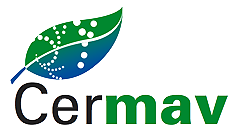Oussama HAMZAH completed his thesis at Cermav under the co-supervision of Dr. Laurent HEUX (CNRS Research Director) and Dr. Bruno JEAN (CNRS Research Director).
It is titled «Passerini three-component reaction for the hydrophobization of microfibrillated cellulose (MFC): A green strategy toward advanced paper packaging»
Abstract:
«Environmental concerns require replacing fossil-based materials with greener alternatives. In this context, recent studies have demonstrated that coating paper or cardboard with microfibrillated cellulose (MFC), which are biosourced particles, can significantly enhance their barrier properties. However, the hydrophilic nature and humidity sensitivity of native MFC-coated papers pose major challenges, limiting their application potential in industries such as food packaging.
To address these limitations, this PhD thesis focused on chemically modifying periodate- or TEMPO-mediated oxidized MFCs using the Passerini three-component reaction (P-3CR) to impart partial hydrophobicity. The P-3CR is a catalyst-free aqueous medium reaction that enables the functionalization of MFCs by combining an aldehyde, a carboxylic acid, and an isocyanide into an α-acyloxycarboxamide function. Advanced spectroscopic techniques, such as ATR-FTIR and CP-MAS 13C NMR, were employed to characterize the modified MFCs and quantify their degree of substitution (DS). It was shown that the DS could easily be tuned over a wide range by varying key parameters such as the type of oxidation (TEMPO-mediated oxidation to carboxylic acids or periodate oxidation to aldehydes), the initial degree of oxidation of MFCs, and the amount and nature of hydrophobic substituents and co-solvents.
Hydrophobized MFCs were then cast to evaluate their film-forming properties and hydrophilicity. Although a high DS initially inhibited film formation, it resulted in significant hydrophobicity, as confirmed by water contact angle measurements. To overcome this limitation, a post-oxidation reaction following P-3CR was introduced, restoring film-forming capabilities while maintaining hydrophobicity.
Finally, the optimized hydrophobic MFC materials were applied to paper substrates using the wet lamination coating method, chosen for its compatibility with MFC-based systems. The coating structural characteristics were analyzed using scanning electron microscopy, and barrier properties were evaluated against water, oil, and water vapor. The optimized materials demonstrated effective barrier performance, showing that the aqueous medium P-3CR can thus be considered as a versatile tool to tailor the functionalization of MFC and provide it with hydrophobicity useful for packaging applications.»
